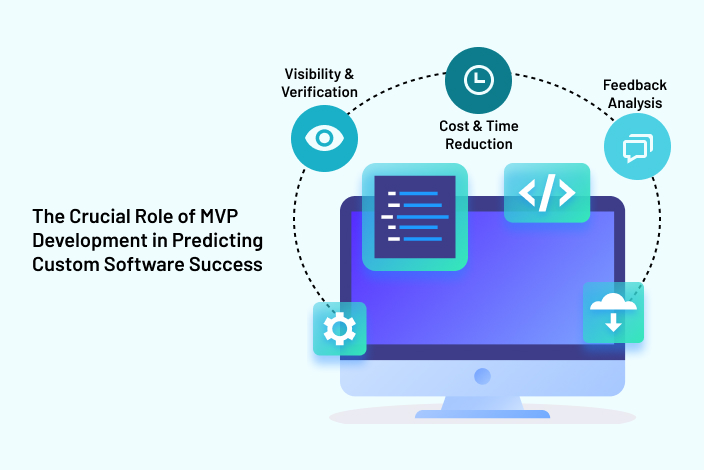In the ever-evolving landscape of technology, businesses are increasingly relying on software development service providers to streamline their operations and stay competitive. These service providers play a pivotal role in optimizing workflow, ensuring that software development processes are efficient, cost-effective, and aligned with organizational goals. In this comprehensive blog post, we will delve into the intricacies of how a software development service provider optimize workflow for their clients.
I. Introduction to Software Development Service Providers
A. Defining the Role
At its core, a software development service provider is an external entity that specializes in delivering end-to-end software solutions. These providers bring a wealth of expertise, resources, and experience to the table, enabling businesses to focus on their core competencies while entrusting the development and maintenance of software to dedicated professionals.
B. The Spectrum of Services
Software development service providers offer a range of services, from initial ideation and concept development to coding, testing, deployment, and ongoing support. The breadth of their offerings allows businesses to choose the level of engagement that best suits their needs.
II. The Optimization Journey: From Concept to Deployment
A. Requirement Analysis and Planning
The optimization of workflow begins with a thorough understanding of the client’s requirements. Software development service providers conduct meticulous requirement analysis, collaborating closely with clients to define project goals, scope, and deliverables. This phase lays the foundation for a streamlined workflow by ensuring that everyone is on the same page from the outset.
B. Agile Methodology in Action
Agile development methodologies have become the cornerstone of efficient software development. Service providers implement Agile practices, breaking down projects into smaller, manageable sprints. This iterative approach allows for continuous improvement, increased flexibility, and the ability to adapt to changing requirements seamlessly.
C. Transparent Communication
Communication is key to any successful collaboration. Software development service providers prioritize transparent and open lines of communication. Regular meetings, progress reports, and feedback sessions ensure that both parties are aligned, preventing misunderstandings and promoting a smooth workflow.
III. Resource Management for Efficiency
A. Skillful Team Composition
Optimizing workflow requires a team with diverse skills and expertise. Service providers carefully compose teams that match the specific requirements of each project. This strategic team composition ensures that tasks are allocated to individuals with the right skills, maximizing efficiency and productivity.
B. Scalable Resources
One of the advantages of partnering with a software development service provider is the ability to scale resources based on project needs. Whether a project requires additional developers, testers, or other specialists, service providers can quickly adjust the team size to meet demand, ensuring optimal resource utilization.
IV. Quality Assurance and Testing
A. Rigorous Testing Protocols
Ensuring the quality of the software is paramount. Software development service providers implement rigorous testing protocols, including unit testing, integration testing, and user acceptance testing. This commitment to quality not only reduces the likelihood of post-deployment issues but also contributes to a more efficient development process.
B. Continuous Integration and Deployment (CI/CD)
The implementation of CI/CD pipelines automates the process of integrating code changes and deploying software. This automation reduces manual intervention, minimizes errors, and accelerates the delivery of software updates. Software development service providers leverage CI/CD practices to optimize the deployment workflow.
V. Security Measures for Workflow Protection
A. Cybersecurity Best Practices
With the increasing threat of cyber-attacks, software development service providers prioritize cybersecurity. Implementation of industry best practices, encryption protocols, and regular security audits safeguard the workflow against potential breaches, instilling confidence in clients that their software is developed and maintained with security in mind.
B. Compliance Management
In industries with stringent regulatory requirements, adherence to compliance standards is non-negotiable. Service providers navigate complex regulatory landscapes, ensuring that the software development process complies with industry-specific regulations. This proactive approach minimizes disruptions to the workflow caused by compliance issues.
VI. Post-Deployment Support and Maintenance
A. Proactive Issue Resolution
Optimizing workflow extends beyond the development phase. Service providers offer post-deployment support and maintenance services to address any issues promptly. Proactive monitoring and troubleshooting contribute to a seamless user experience and prevent potential disruptions to business operations.
B. Continuous Improvement Iterations
The optimization journey is a continuous process. Service providers engage in regular retrospectives, analyzing project outcomes and identifying areas for improvement. This commitment to continuous improvement ensures that workflows are refined over time, adapting to evolving business needs and technological advancements.
VII. Realizing Business Benefits Through Optimization
A. Cost Efficiency
By streamlining workflows and optimizing resource utilization, software development service providers contribute to cost efficiency. Businesses benefit from reduced development times, minimized errors, and efficient allocation of resources, ultimately leading to a positive impact on the bottom line.
B. Faster Time to Market
Efficient workflows directly translate to a faster time to market. Rapid development cycles, coupled with Agile methodologies and automated deployment processes, enable businesses to launch products and updates swiftly, gaining a competitive edge in the market.
C. Flexibility and Adaptability
In a fast-paced business environment, flexibility is a valuable asset. Software development service providers empower businesses to be more adaptable by offering scalable solutions and the ability to quickly pivot in response to changing market demands.
Conclusion: Collaborative Optimization for Success
In conclusion, the optimization of workflow through software development service providers is a collaborative endeavor. Businesses that harness the expertise of these providers stand to gain not only in terms of efficiency and performance but also in the ability to focus on strategic initiatives. As technology continues to evolve, the role of software development service providers in optimizing workflow will be pivotal in shaping the success of businesses across various industries. Embracing this collaboration is not just a choice; it is an investment in a future where streamlined workflows are synonymous with organizational success.
Expert service providers stand out due to their proven track record, industry-specific expertise, commitment to communication, focus on quality assurance, scalability strategies, customer-centric support, cost-efficiency, and innovative approach. By understanding and prioritizing these unique qualities, businesses can make informed choices that lead to successful software development endeavors and set the stage for future growth and innovation. Remember, when it comes to software development, excellence is not just a goal; it’s a prerequisite for sustained success.



